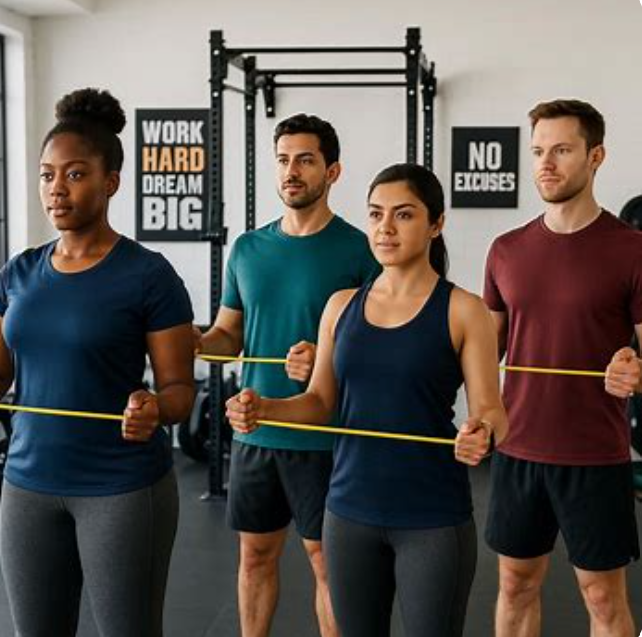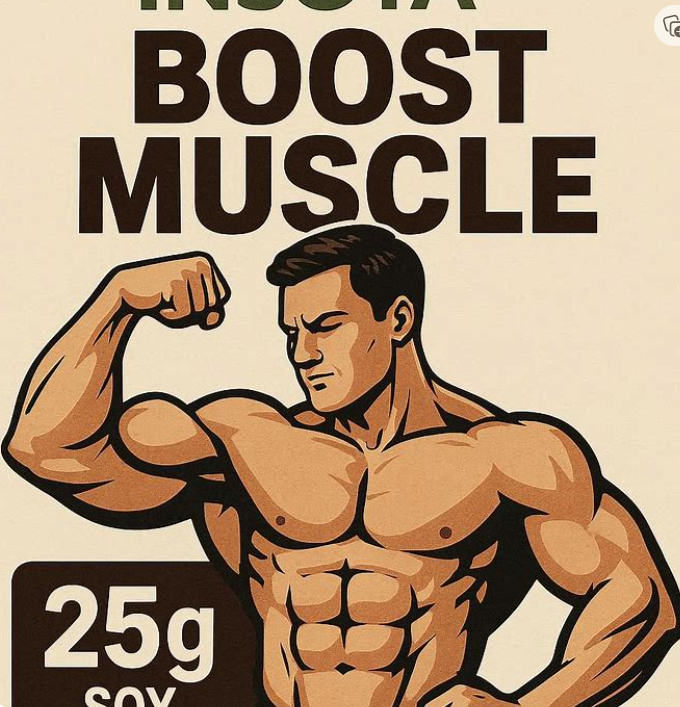External rotation of shoulder exercises are essential for building strong, stable shoulders and preventing common injuries like rotator cuff strains. In this comprehensive guide, we’ll dive deep into what these exercises entail, their benefits, and how to perform them correctly. Whether you’re an athlete looking to enhance performance or someone recovering from shoulder discomfort, you’ll find practical tips, step-by-step instructions, and variations to suit your fitness level. We’ll also touch on related movements, such as hip external rotation, to give you a well-rounded understanding of rotational strength training.
By the end of this article, you’ll have a toolkit of external rotation of shoulder exercises to incorporate into your routine, along with advice on avoiding mistakes and maximizing results. Let’s get started on strengthening those shoulders!
Understanding External Rotation of the Shoulder
To appreciate external rotation of shoulder exercises, it’s crucial to grasp the basics of shoulder anatomy. The shoulder joint, or glenohumeral joint, is a ball-and-socket structure that allows for a wide range of motion. External rotation refers to the movement where the arm rotates outward away from the body’s midline, engaging key muscles in the rotator cuff.
The primary muscles involved in external shoulder rotation include the infraspinatus and teres minor. These are part of the four rotator cuff muscles that stabilize the shoulder during activities like throwing, lifting, or even daily tasks. Weakness in these areas can lead to imbalances, pain, or reduced mobility.
Interestingly, similar principles apply to other joints. For instance, hip external rotation involves rotating the thigh outward, targeting muscles like the piriformis and gluteus maximus. While our focus is on shoulders, understanding hip external rotation muscles can highlight how rotational exercises promote overall body stability.
External rotation shoulder movements are often overlooked in standard workouts, but they’re vital for balanced development. Neglecting them can result in overdeveloped front muscles, like the deltoids, leading to posture issues.
Benefits of External Rotation of Shoulder Exercises
Incorporating external rotation of shoulder exercises into your fitness regimen offers numerous advantages. First and foremost, they enhance shoulder stability, reducing the risk of injuries during sports or heavy lifting.
These exercises also improve posture by counteracting the forward hunch common in desk-bound lifestyles. Strong external rotators help pull the shoulders back, promoting an upright stance.
Athletes in particular benefit from external rotation shoulder work. Baseball pitchers, swimmers, and tennis players rely on this motion for power and precision. Regular practice can boost performance and speed up recovery from strains.
Beyond athletics, these exercises aid in rehabilitation. Physical therapists often prescribe them for conditions like impingement syndrome or post-surgery recovery. They gently strengthen without overloading the joint.
On a broader scale, rotational training extends to other areas. External rotation of hip exercises, for example, can complement shoulder work by improving lower body mobility, creating a full-body harmony that enhances activities like yoga or running.
Studies show that consistent external shoulder rotation training can increase joint range of motion by up to 20%. This flexibility translates to better everyday functionality, from reaching overhead to carrying groceries.
Moreover, these exercises support muscle symmetry. By targeting the often-undertrained posterior chain, they prevent imbalances that could lead to chronic pain.
Top External Rotation of Shoulder Exercises for Beginners
If you’re new to external rotation of shoulder exercises, start with these foundational moves. They’re simple, require minimal equipment, and focus on proper form to build a solid base.
Side-Lying Dumbbell External Rotation
This is a classic isolation exercise that zeros in on the rotator cuff.
- Lie on your side on a bench or mat, holding a light dumbbell in your top hand.
- Bend your elbow to 90 degrees, keeping it tucked against your side.
- Slowly rotate your arm outward, lifting the dumbbell away from your body.
- Pause at the top, then lower back down controlled.
- Aim for 3 sets of 10-12 reps per side.
Use a weight that challenges you without straining—start with 2-5 pounds. This exercise is great for rehab and mirrors the mechanics of external rotation shoulder in daily life.
Standing Band External Rotation
Resistance bands make this accessible for home workouts.
- Attach a band to a sturdy anchor at waist height.
- Stand sideways to the anchor, holding the band in the hand farthest from it.
- Keep your elbow bent at 90 degrees and pinned to your side.
- Pull the band outward, rotating your shoulder externally.
- Return slowly to start.
- Perform 3 sets of 12 reps each arm.
Bands provide variable resistance, making them ideal for progressive overload in external shoulder rotation training.
For variety, compare this to hip external rotation exercises, where bands are used similarly but for the lower body, engaging hip external rotation muscles like the gemellus.
Advanced External Rotation of Shoulder Exercises
Once you’ve mastered the basics, level up with these challenging variations to push your limits.
Cable Machine External Rotation
Gym-goers will love this for controlled tension.
- Set the cable pulley to elbow height.
- Stand perpendicular to the machine, grasping the handle with one hand.
- Elbow at 90 degrees, rotate outward against the resistance.
- Squeeze at the peak, then resist on the way back.
- Do 4 sets of 8-10 reps per side.
This builds strength for sports requiring explosive external rotation of shoulder.
Prone External Rotation with Dumbbell
A floor-based option that adds gravity’s challenge.
- Lie face down on a bench, arms hanging off the sides with dumbbells.
- Bend elbows to 90 degrees.
- Rotate arms outward, lifting weights toward the ceiling.
- Hold briefly, lower slowly.
- 3 sets of 10 reps.
This engages the upper back too, enhancing overall posterior strength.
To draw parallels, external rotation of hip in exercises like clamshells uses similar isolation but for the glutes, showing how rotational patterns recur across the body.
Incorporating Variations and Equipment
Diversify your external rotation of shoulder exercises with tools like kettlebells or stability balls for added instability.
For example, try the kettlebell bottom-up external rotation: Hold a kettlebell upside down by the handle, elbow bent, and rotate outward. The instability fires up stabilizers.
Or, use a stability ball for wall slides—lean against it and perform external rotations to engage the core simultaneously.
Here’s a quick comparison table of equipment options:
| Exercise Type | Equipment Needed | Difficulty Level | Target Muscles |
|---|---|---|---|
| Side-Lying Dumbbell | Dumbbell, Mat | Beginner | Infraspinatus, Teres Minor |
| Standing Band | Resistance Band | Intermediate | Rotator Cuff, Deltoids |
| Cable Machine | Cable Machine | Advanced | Full Shoulder Complex |
| Prone Dumbbell | Dumbbell, Bench | Intermediate | Upper Back, Rotators |
This variety keeps workouts engaging and prevents plateaus in external shoulder rotation progress.
Common Mistakes to Avoid in External Rotation of Shoulder Exercises
Even seasoned fitness enthusiasts slip up. One frequent error is using too much weight, which compromises form and risks injury.
Another is allowing the elbow to drift away from the body—keep it glued to your side for pure external rotation shoulder isolation.
Rushing the movement is also problematic; controlled tempo maximizes muscle engagement.
Poor posture, like rounding the shoulders forward, reduces effectiveness. Always maintain a neutral spine.
If you experience pain (not to be confused with muscle fatigue), stop immediately and consult a professional. This is especially true if you’ve had prior issues with external rotation of the shoulder.
Interestingly, similar pitfalls occur in external hip rotation exercises, where improper alignment can strain the hip external rotation muscles.
How to Build a Routine with External Rotation of Shoulder Exercises
Integrate these into your weekly plan for optimal results. Aim for 2-3 sessions per week, allowing recovery time.
Sample Beginner Routine:
- Warm-up: Arm circles (2 minutes)
- Side-Lying External Rotation: 3×10
- Standing Band: 3×12
- Cool-down: Shoulder stretches
For advanced users:
- Cable External Rotation: 4×8
- Prone Dumbbell: 3×10
- Add supersets with push-ups for balance
Track progress by noting increased reps or weights. Combine with hip external rotation for a full rotational workout, targeting external rotation of hip to improve lower body power.
Consistency is key—pair with nutrition rich in anti-inflammatory foods like omega-3s to support joint health.
Related Movements: Hip External Rotation and Beyond
While our primary focus is shoulders, exploring hip external rotation provides context. External rotation of hip involves turning the thigh outward, crucial for activities like squatting or dancing.
Key hip external rotation muscles include the piriformis, obturator internus, and gluteus medius. Exercises like seated figure-four stretches or frog poses enhance this.
Understanding these parallels can inspire hybrid routines. For instance, a yoga flow incorporating both external shoulder rotation and external hip rotation builds holistic mobility.
External hip rotation deficiencies often mirror shoulder issues, leading to imbalances. Addressing both promotes symmetry and reduces injury risk across the body.
Safety Tips and Modifications
Prioritize safety in external rotation of shoulder exercises. Always warm up with light cardio and dynamic stretches.
If you have pre-existing conditions, modify by reducing range or using no weight. For seniors, seated versions minimize strain.
Listen to your body—mild soreness is normal, but sharp pain isn’t.
Consult a trainer for personalized advice, especially if integrating with external rotation shoulder rehab programs.
FAQs
What are the best external rotation of shoulder exercises for beginners?
For those new to external rotation of shoulder exercises, start with side-lying dumbbell rotations or band pulls. These build foundational strength without overwhelming the joint, focusing on controlled movements to engage the rotator cuff effectively.
How often should I do external rotation of shoulder exercises?
Aim for 2-3 sessions per week of external rotation of shoulder exercises to allow recovery. Consistency helps strengthen the external shoulder rotation muscles, but overdoing it can lead to fatigue or injury.
Can external rotation of shoulder exercises help with pain relief?
Yes, external rotation of shoulder exercises often aid in alleviating discomfort from imbalances. They target the external rotation shoulder area, improving stability—similar to how hip external rotation exercises relieve lower back tension.
What’s the difference between external rotation of shoulder and hip external rotation?
External rotation of shoulder focuses on outward arm rotation, strengthening the rotator cuff, while hip external rotation involves thigh outward turns, engaging hip external rotation muscles like the piriformis for lower body stability.
Are there any risks with external rotation of shoulder exercises?
If done incorrectly, external rotation of shoulder exercises might strain the joint. Always use proper form, start light, and avoid if you have acute injuries—consult a pro for safe external shoulder rotation modifications.
How do external rotation of shoulder exercises benefit athletes?
Athletes gain from external rotation of shoulder exercises by enhancing throwing power and injury prevention. They build resilience in the external rotation shoulder, much like external rotation of hip boosts agility in sports.
Can I combine external rotation of shoulder exercises with other workouts?
Absolutely, pair external rotation of shoulder exercises with push-pull routines for balance. Incorporating external hip rotation moves creates a comprehensive program targeting multiple rotational planes.
In summary, external rotation of shoulder exercises are a game-changer for shoulder health, offering stability, injury prevention, and enhanced performance. From beginners to pros, these moves—along with insights into related areas like hip external rotation—provide a pathway to stronger, more mobile joints.
Ready to transform your shoulders? Start incorporating these external rotation of shoulder exercises today. Grab a band or dumbbell, follow the steps, and track your progress. For personalized plans, consider consulting a fitness expert. Your stronger shoulders await—get moving!




One thought on “External Rotation of Shoulder Exercises: 10 Must-Try Moves”